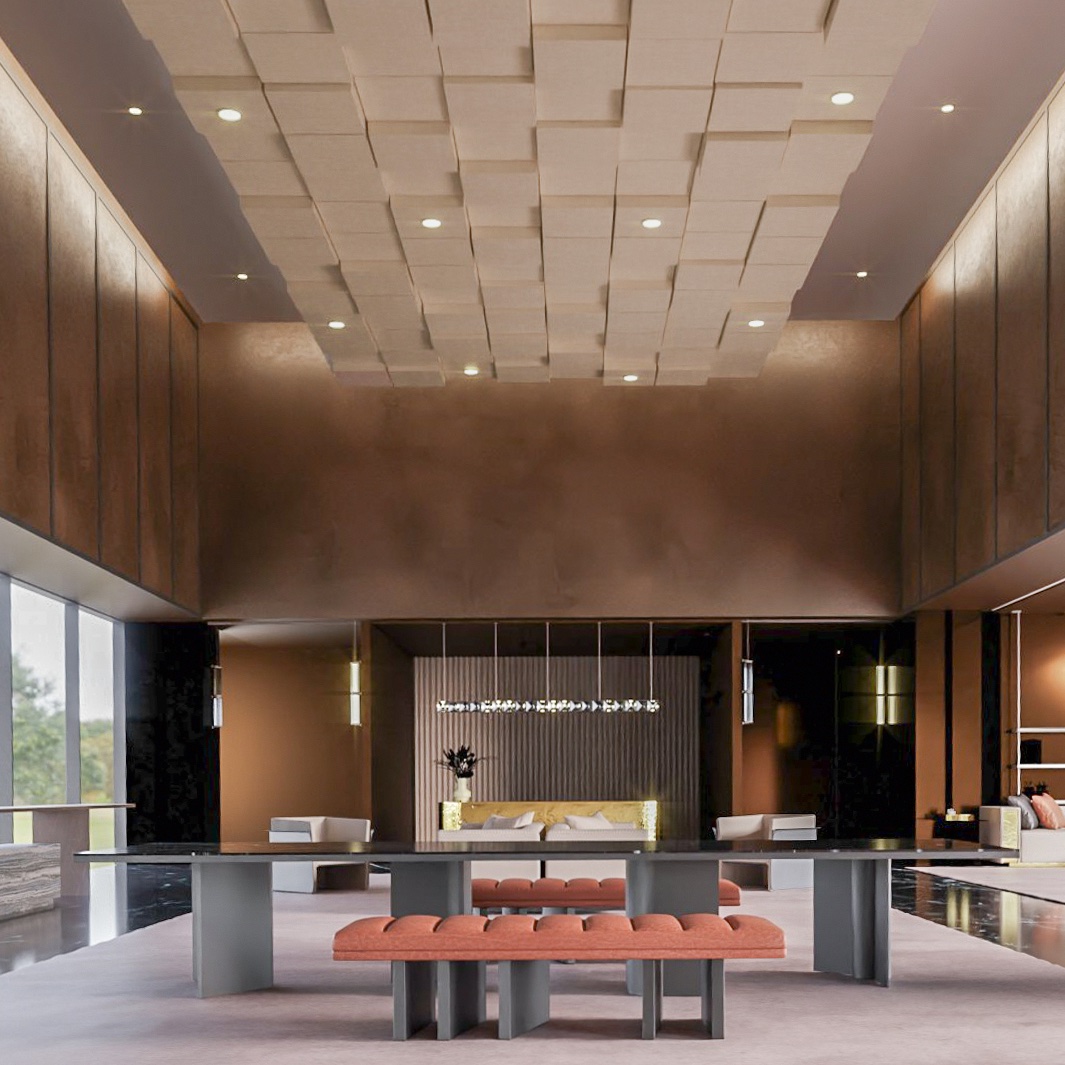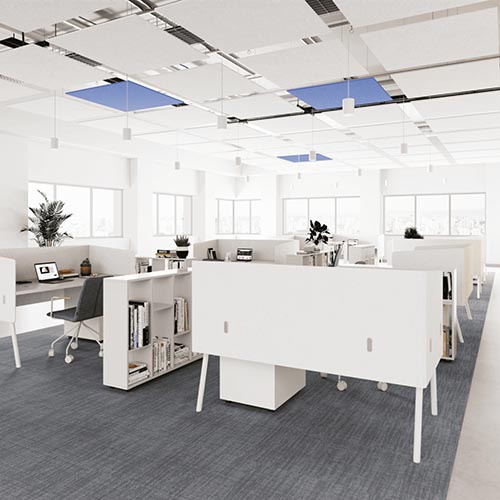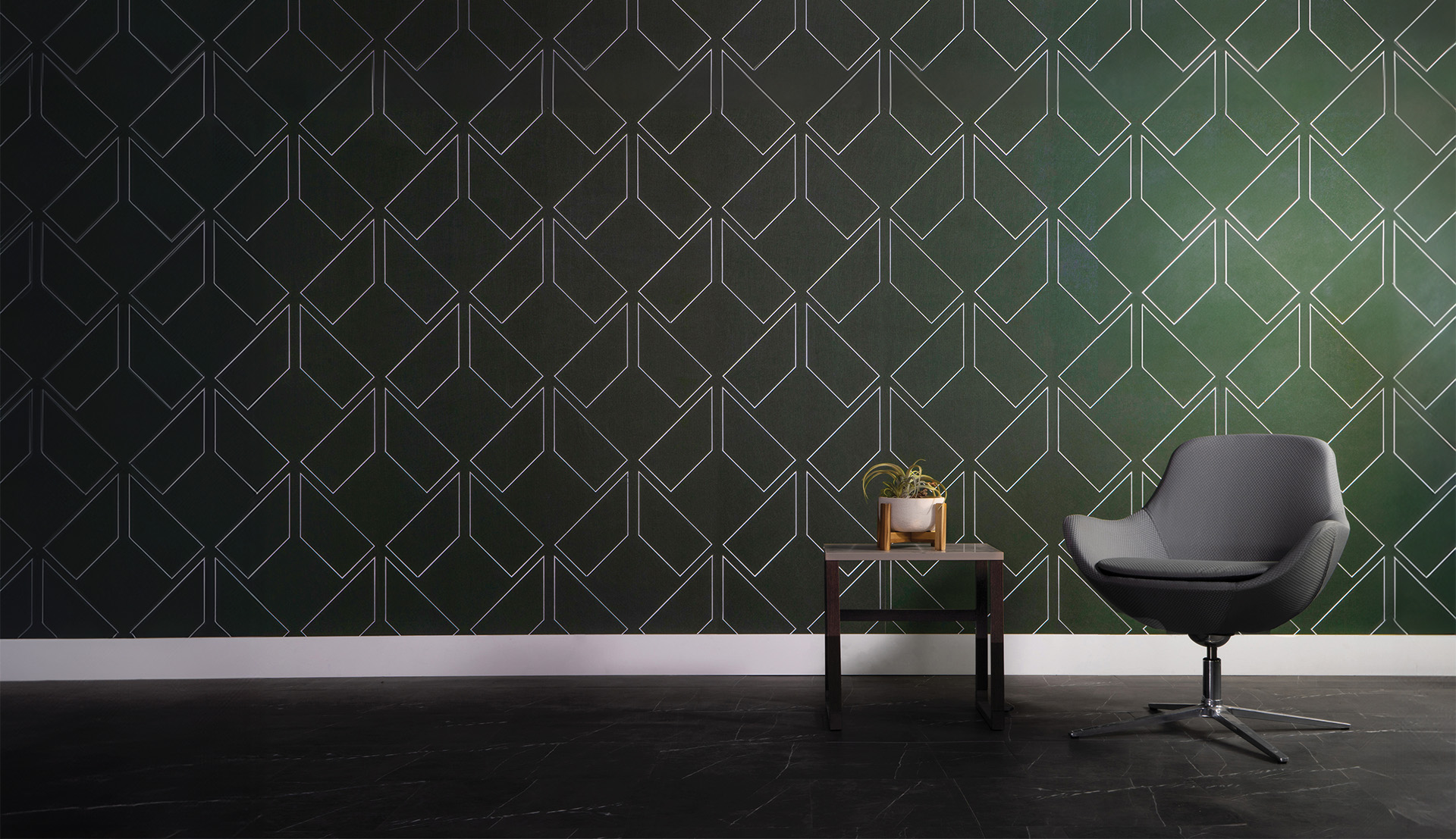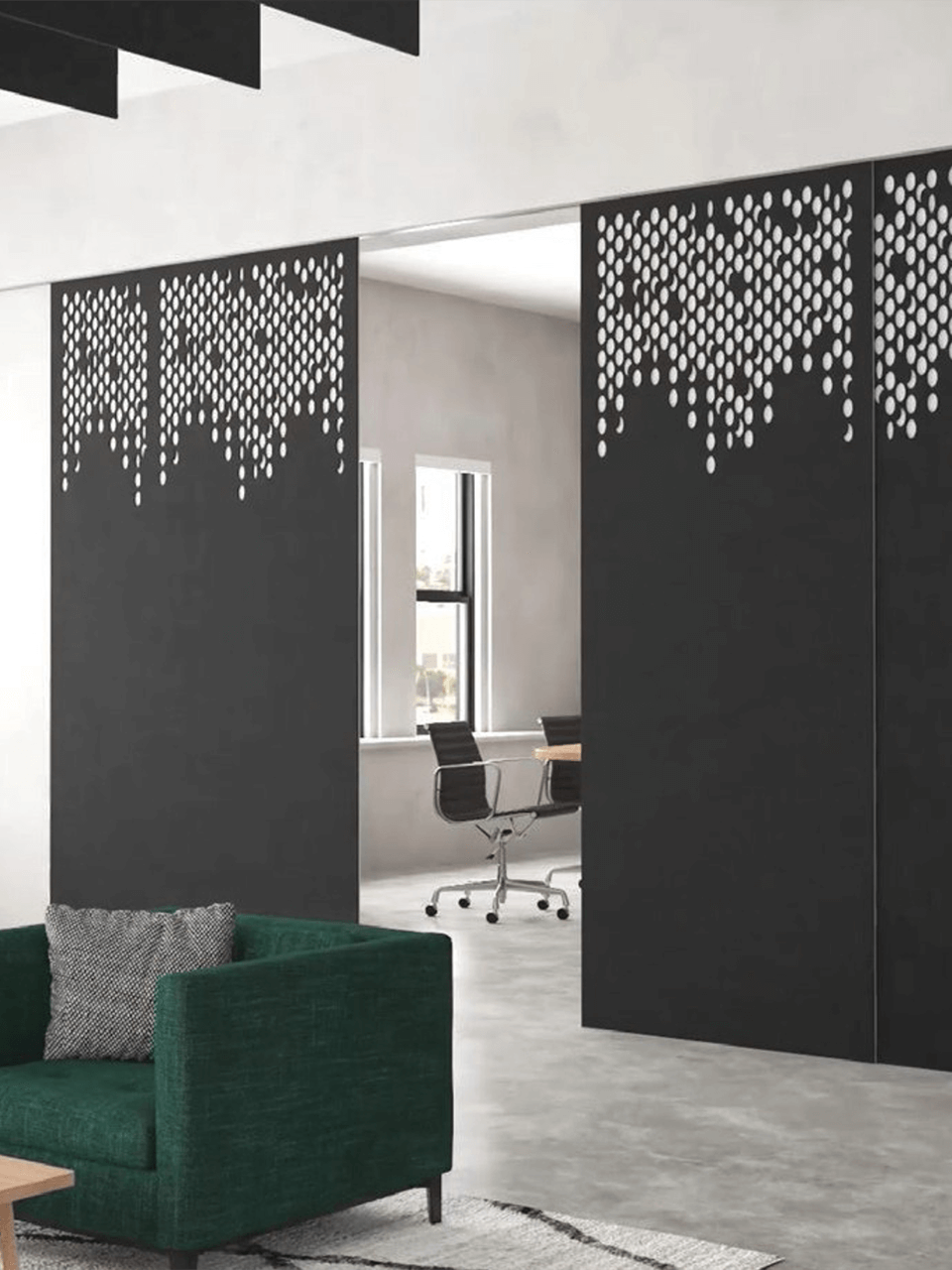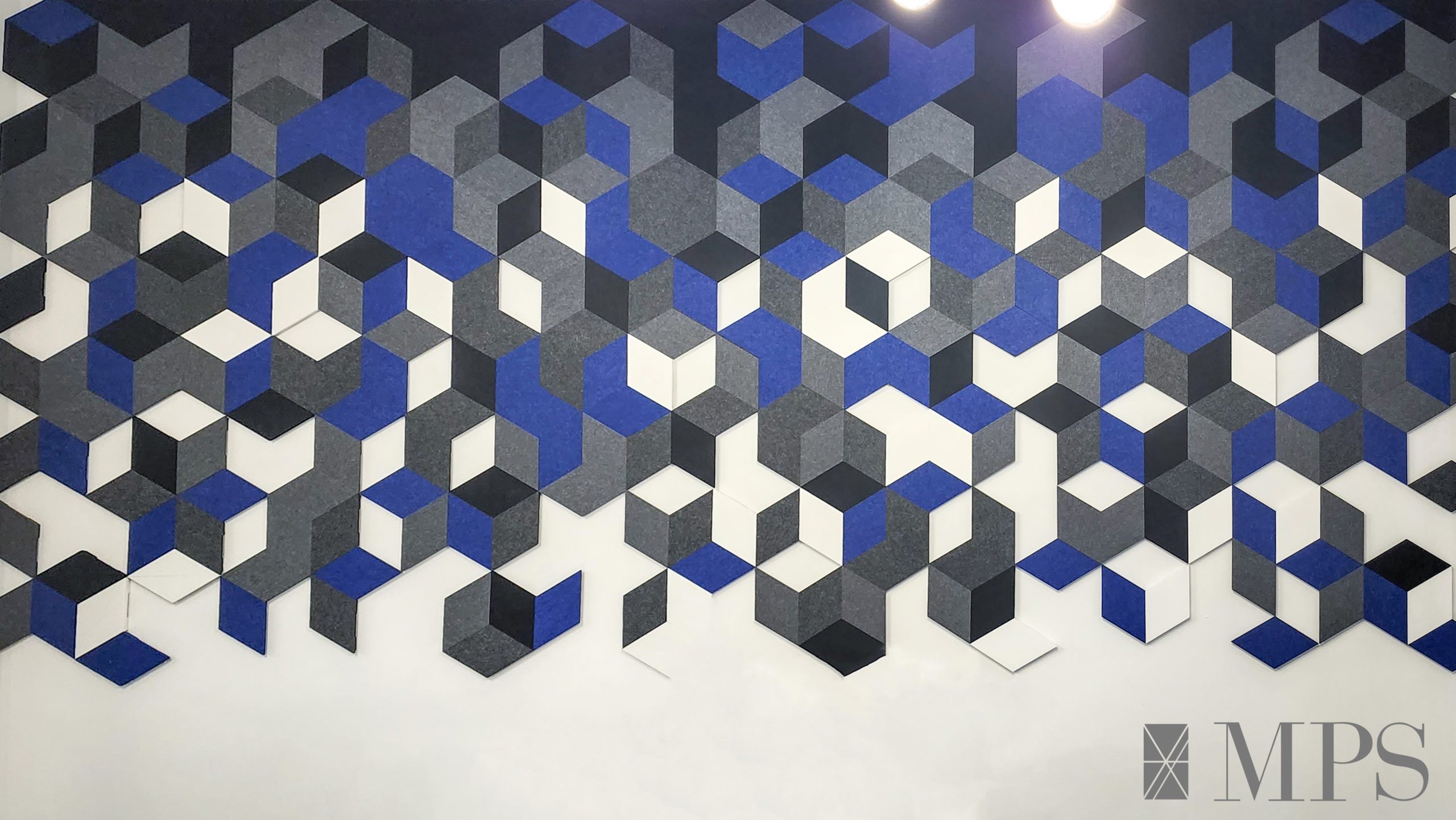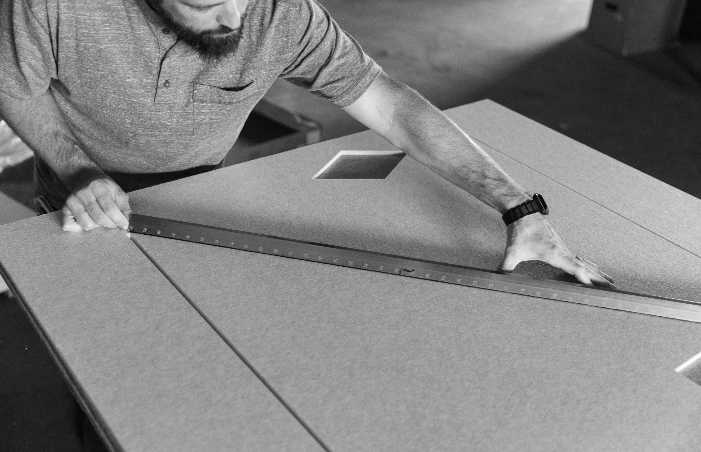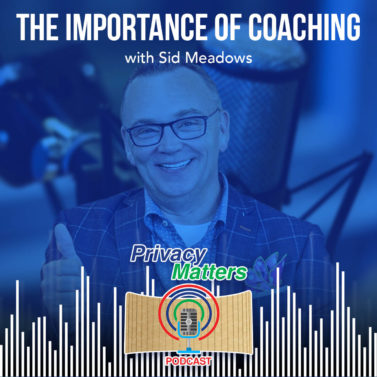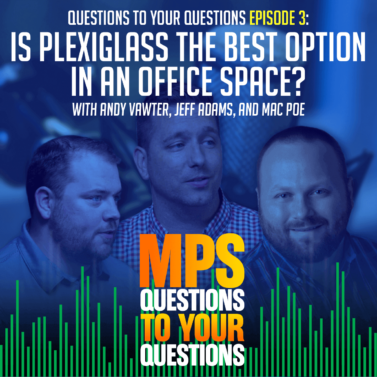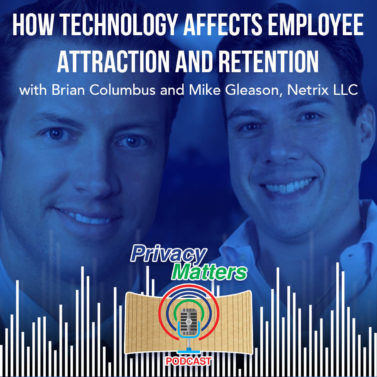Together with host Andy, Brian and Mike answer questions about Netrix as well as the impacts of technology on sectors and employees. They will also both open up on what they want to alter with the involvement of technology in sectors and answer some personal questions from Andy.
Andrew: [00:05]
Welcome to the Privacy Matters podcast. I am your host, Andy Vawter.
My guests today are two people, Brian Columbus and Mike Gleason of Netrix. Netrix is an AV and IT company that is transforming the way that these technologies are brought into the workspace. They do it in a very unique interesting way and I think you’re really going to enjoy learning about how they differentiate themselves from everybody else in the industry.
Thanks so much for being here guys. We’re actually at the Fuse Dynamic Workspace podcast room. I am your host Andy Vawter and I’ve got with me Brian Columbus and Mike Gleason from Netrix. They are a nationwide AV company that actually helped Fuse with a whole lot of things. We can talk a little bit about that. A pretty progressive company, I think as far as the IT/AV thing. I’ll let them talk about that quite a bit. What sets them apart and how they do things differently and then we’re going to talk a little about what we did here at Fuse and how we help them.
Thanks for being here guys. I am going to start with Mike. Mike, you’re a partner in the business and you really helped kind of push Netrix to who they are and what they are. So I want to start with you a little bit about- give us an overview of what the company does and what sets you apart from the competition and maybe where you fit in into the mix of this crazy world that we’re all trying to be a part of.
Mike:
Excellent! I am Mike Gleason, Partner Director of Netrix. I head up our digital workplace practice. What does that include? Our mission within my practice is to help clients build out technology enable workspace, large global corporate headquarters so that they can leverage as a competitive tool to re-energize existing employees, hire the next generation workforce and really build a space that is automated and fun to come to work at every single day. Netrix does a lot of things or a global company. We’ve had a huge expansion over the last couple of years. When I became part of Netrix seven years ago 80 employees and now we have over 600. Really, the value of the organization is we’re helping clients build out new workspace. We can play the role that leads IT, architect. So not only at the beginning of the project doing the consulting, budgeting, design all the way through implementation and managed services and then to wrap that all up, we can give our clients any type of consumption model they’re looking for. So whether they want to own the equipment, manage it themselves, have us provide it, have it cloud. We work with them to better understand how they want to consume support and finance, their IT initiatives and then have that match to the goal of what their guiding principles are for the project.
Andrew: [03:04]
So what I am hearing is basically you take them from the very beginning of what do you want out of your space as it relates to what you guys do. And then you design it, budget it walks them through everything all the way like you said managed services. You’ll even oversee after they move in and track it for them and services it and all that for your customers.
Mike:
Yeah, absolutely. It’s interesting. You move in do you build that new space 10 years ago technology was a very small portion of it. Today, potentially up to 18 different technology work stacks that someone has to think about how many a budget design it. And then it’s all fine and to put in technology into space but how is it going to align to end-user adoption the experience they’re looking for. I mean, too many times people design spaces in the past in silos, They’re gonna get one person and this one person into this and we’re all about. Start with the end-user experience and what your employee wants from a technology innovation experience in the space and then figure out how to pull all the different technologies together and don’t think within a silo.
Andrew: [04:10]
Sure. So is that going to put words in your mouth is that your differentiator as a company? Is that what sets you apart? That one of the things.
Mike:
Yup. It’s huge. We’re a company that can do it all in-house. So it’s really a one-stop-shop. So I don’t have to go outsource some people to do this portion. We’ve seen some projects, they’ve got nine or ten different technology partners in there. The fact that we know we’ve done everything from a simple 5000 square feet trading firm to a million square feet cutting edge hospital and we can do that all under one umbrella because we have 300 plus engineers that have the expertise in all those different technology sets. It’s really that approach I say Ok, I feel comfortable Netrix can do all this. I don’t have to manage seven or eight different technology providers and then when something goes wrong, they’re going- well that’s his expertise. Right now, we’re working alongside the client really to deliver the vision that they have and being that person that’s really putting technology first.
Andrew: [05:07]
Excellent. So, Brian, you’re here in Dallas so you are head for Netrix. I am excited to have you talked about kind of your perspective from that because that’s the global kind of idea of what you guys are trying to accomplish. How does that work out? Let’s say on a day to day basis or even maybe more specifically here at Fuse and working with them.
Brian:
Well you know I think you have to take it a step back. We always start with the customer and obviously what the use cases but sometimes they don’t even know what that is right. So, then you have to get down to the department level and talk to those leaders, find out how it is that they want to use the space. Understand that there is an actual psychological component between how technology and people come together and then solving for that problem. Right. So, you’re not going to be able to get everybody up into the front of a room and an interactive whiteboard. And so, you have to have different environments for different people and software all of those things. And to Mike’s point, we do that in different models, different consumption models. But it’s finding out what that core uses and then driving it to fruition.
Andrew: [06:11]
Do you kind of have a fastball that you like to use? Do you know a specific way of sort of questioning or a way to uncover that or is it kind of unique based on every person you’re talking to?
Brian:
So, with me you know they’ll say one thing and they get really excited and you know they’ll start talking about stuff and then I get an engineer on the phone and we start talking dollars. All of a sudden you know excitement starts dying down and then we have to re-engineer that vision, right? Get them excited about what they actually want. So, it’s a matter of finding the solution, finding a solution that fits from both a budget and a use case scenario and just helping them bring it. So, for instance, here at Fuse, they are coworking space, right? So, they lease out space and they are looking at ways of making themselves differentiators in the marketplace. One of the things that they thought that they could do is help their core market space. There are leases, there are rent horse proselytize their own businesses. And the best way of doing that today is via podcast. And so, a lot of their consumers were saying hey if we had a podcast room that we could rent from you guys for you know an hour or a week or whatever if you would be able to provide that technology that would be really useful to us. And so, they came to me and said hey is this something that we would be able to solve for. And we said absolutely. So, I in conjunction with you came together solved for all of the acoustic problems that they had in this particular environment. There’s a lot of class sizes as you can see that the mining walls have zero insulation. So, in this particular room, we had some STC problems that were really bad. The only way that we were able to solve for that was by bringing you guys in.
Andrew: [08:09]
And then we’re loving the podcast room just because we were able to walk in here plugin and you know. I’m a technology idiot I was able to figure it out very quickly I think. (Brian: So there you go. Ease of use, right?) Set it up pretty well so. So you guys have both been in the AV industry for a while. What would you say is the most rapidly changing thing that you’re seeing in your industry and we’ll start with you, Brian.
Brian:
Probably controls and analytics. Right. I mean you know we’re in an analytically driven environment now and we are able to get metrics on everything. You know we can tell how often a light switch is turned on, we could how often a TV is turned on, we can tell how often you know birth at the front desk scheduling meetings and nobody’s ever attending them. So we were able to actually take the stack that we sell our customers and give them some really great analytics behind it to support future projects whereas before a customer would come to us and say hey we want a conference room and we would do the same thing but everybody else did which was obviously you need to display something at the end of a table you’re going to need some microphones some speakers and we have solved that problem right. But not every company needs that and that’s not higher recurring works or collaborates.
Andrew: [09:27]
And so that’s really unique. I hadn’t even thought about that. That’s really unique. You just won me over. (Brian: Well there you go.) Mike how about you?
Mike:
I think the two things that I see really changing are one is the integrated design used to be done. Okay, go get a Navy company then go get a phone system company then go get a round switch wireless company then go get the server company and then be used to just build within these silos and then shove it to the end-user and say OK well I hope everything works you know. Today, with IoT and cloud and all these things. People walk in they expect the room to work. They don’t really care how things are done behind the wall. But if you don’t know to understand all the different technology- aspects of it. It’s not going to be an integrated design. And number two is, what I alluded to before is consumption models. Everyday usage just buys the equipment and then install it and then give it to the customer and say okay you run it you manage it and you’re going to pay upfront. And that’s the cost. We’re now even in our personal lives, I don’t know. These days it says oh no I want to buy Netflix and pay for it with some equipment in my house and not and pay for it all upfront. I’m going to pay for Itunes and we want something to be basically rented and we want to pay on a monthly basis. And I think people are now leveraging different consumption models to be able to finance you know high-end technology projects where before when it was only you have an on-prem option you had to come up with all the money upfront and then you dealt with it and you had to go hire a really smart engineer to manage it all day long. Now put it in simple technology and put it in as you know as a service so much more convenient.
Brian:
So a really great example if I could jump in there is you know our cell phones and you know we have three different flavors of cell phones sitting on the table right now but I promise you in six months or while let’s say we’re in for in July so five months when Apple decides that they’re going to release the newest and latest and greatest iPhone. I want to be able to walk into my provider and I want to be able to say I want the latest and greatest and if that cost me five dollars more a month, I’m willing to take on that burden, right? Technology where we’re able to actually do that as a service. And it’s not a leasing model where at the end of that you’re going to offer us a dollar and we’re going to buy you out of truly as a service because So the same is true with there are services that are wrapped around the consumption of that technology. But the beautiful thing is that as your organization grows your need for technology is going to grow as well, right? So we come in at the end of those three years we have another great conversation with myself a technologist- Mike whoever wants to be involved. We sit down with those end users we find out what their needs are now as opposed to where we were then, right? We take everything down and start fresh. It just continues the service model.
Andrew: [12:12]
So very different from- let’s say traditionally AV has been once you standardize on this is how this customer likes to do it. But then every building we build-out for the next- however many years is just yeah let’s do it just like we did in Dallas. Let’s do it that way. And so you guys are much more or you’re using your analytics and able to come back and say you’re not using this but you are using this or maybe this is a better way to approach.
Brian:
Absolutely and that’s that is not to say that we don’t enjoy standards because you know we want to standardize our customers as much as possible as well because as people travel from one location to the other we want their experience to be the same. So that it’s easy for everybody to use and everybody gets the most use of technology. But with that being said, the way that a marketing department is going to use technology and the way that a finance department is going to use technology to vastly different experiences, right? So we have to make sure that we’re solving for both groups.
Mike:
And I think to wrap it all up also is you can’t now just being technology per the room. You know. I see too many spaces I walk into it’s oh I need this type of experience I have to go to that room and oh, by the way, don’t touch anything we’ve got to call Sally because she’s the only one that knows how to make this room work which drives me nuts and that’s why you get meetings that start you know 7 to 10 minutes late because you still need a guy or a girl to show you how to use this stuff. But you know I can press and I kind of my phone and I can Facetime anybody around the world. I don’t need an I.T. guy to show me how to do that. (Andrew: And Alexa order paper towels, right?) (Brian: Yeah. You know Grandma can do it. You know we should be able to do right there right.) And technology needs to be able to be mobile and use in every single in the room. Not if I want this experience I only go to that room.
Andrew: [13:52]
That makes them make a lot of sense. So that’s obviously and it’s going to continue to change and you know six months a year from now it’s gonna look even different. But what’s staying the same from your guys perspective.
Brian:
The need to share content? You know. I think at the end of the day what we do is we enable people to get the thoughts that are encompassed in their brain and to a larger group of people, right? I mean at least 80 percent of what we do is it’s just data transmission. And I think that that’s going to always be what we’re solving for is how do I get information from one person to a group of many, right? So, I think that stays the same. I think that interactivity is growing and I think that is going to continue to be on-trend. I think that you know kids will walk up to things and they automatically want to touch it and they expect some kind of response and as people are graduating from college you’re going to have the same needs and wants in the workplace as well. So I think those are a couple of things here.
Mike:
Thank you, Brian. Now the main points I think the one thing is companies will always need some type of ability to have some space for people that collaborate. There are very few niche companies in the world that don’t need office space yet you don’t see people who say oh office space is going down you know everybody can work from home those types of things. That’s not true actually. We’re building out more office space. It’s just a matter of how are you going to build an office space that people’s subway is going to sit through traffic for 45 minutes to get to that they don’t go into that experience. Well, I sit in traffic and get in the office and then I try to use this board room. But the technology doesn’t work. I’m trying to work in this area. But I can’t work here. I have to go to another. If you’re going to build that space you need to put technology first so that people that are taking the time to leave their families to come into the office. They have a very automated excellent experience with technology today. I love going into the office. There’s no one really has to go to an office anymore. But you provide a space where you can collaborate and communicate with your employees. So when you do it it has to be efficient. And technology really is one of the key principles of that.
Andrew: [15:54]
And it makes a lot of sense. So, of course, this is a leading question but how is acoustics affecting how this works? I mean obviously, you already mentioned here at Fuse we partnered up to give them the AV solution for their podcast room but also the acoustical absorption in the walls. So that way this glass you know not the very private room was substantially changed as a result of that but what are you noticing maybe in a broader sense of how is acoustics being affected by the overall office trends and even AV.
Brian:
Yes as I was going to say. You know let’s take that a step back and I think that really you know they push to the open office environment from the greater indie community is making it so that you have a really great future ahead of you. And I think you know because that is a problem that we always software there is literally not a single opportunity that I go into now but doesn’t have some kind of open-seating whether it be benching or cubicles or whatever. So, you’re going to have to solve for sound masking and some regards and just like in this beautiful environment we’re in now you know construction will come voted the lean tilts they try to use a really cheap demonizing wall as opposed to doing sheetrock up to iron, right? And so then you have an environment where you can literally hear the air conditioning ducts of what’s going on with your neighbors on either side of you if you are in an organization where you’re all playing on the same team that might not be as big of an issue as in an environment like this where ever you know everybody’s a different team sure everyone has a different team, right? And you might have opposing teams that are actually sitting right next to each other and so it was definitely a problem in this particular environment but I think that it’s becoming more of a trend than something that we’re actually solving for, unfortunately.
Mike:
And I think on top of that is as video continues to explode to have a really excellent video conferencing experience. You have to handle the acoustic side of it first. I can’t tell you how many calls I’ve been on that maybe the video looks good but the acoustics in their rooms terrible. And I’m like you know go outside and get on your cell phone because that room it’s so bad to have that type of conference it doesn’t work and I think a lot of times people don’t think about what is the experience on the other end. And if you don’t think about the acoustics of that room and how they’re going to deliver that experience to the people on the other side you’re going to spend a lot of money on some nice equipment that can deliver that communication path but it’s going to sound terrible from where you’re at.
Andrew: [18:27]
A great example that was I was like you just said I was on a job site last week with a customer where you know it’s under construction we’re walking through and he just explained he said, “You know I’ve learned a long time ago that I can build all these hotel rooms and do all this. And if people can hear what’s being said from room to room, they just don’t. None of them gets used.” He’s like so we can literally put furniture AV make these glass fronts make it look beautiful and they don’t get used. He’s like so I solve the acoustic problem first before I do anything else. He’s like because that’s just I’ve he’s like I’ve learned the hard way. So I fired him because I was there with him you know.
Brian:
I think if you were to interview the folks here at Fuse I think that they would tell you the same thing and they’re in the middle of building additional iterations of this same environment and they’re going to be doing sheetrock walls that go all the way up moving forward because that they now understand that problem. So, we’ll only be solving for a common area issue. But you know it’s where you want to put your money right. And there’s always checks and balances to that. And so, but an industry trend I think that we are going to continue to see more open offices. I think that things are going to be more of a residential environment because again to Mike’s point you’re trying to draw people in. If I can sit on my couch and be effective and I want to sit on your couch and be effective, right? And then it’s about being able to easily get the transmission of ideas again. So, you know the network cafe typesetting you know having an area if I see Mike sitting there and I’ve been emailing him over and over and over hey Mike all these needs are your approval. Hey, Mike, all these needs are your approval. He’s just not responding to me. It seems he’s sitting there at lunch. I cast that bad boy on there. I’m, like hey Mike we’re going to look at this real quick right. I get approval and we moved on. So, you know that transmission.
Andrew: [20:23]
Well, I think people are getting so accustomed to consumer technology being so easy, intuitive and like you said you can Facetime grandma or she can Facetime me, no problem. So, if it’s that easy why is it so difficult sometimes. You know in these office spaces for us to simply get something like that, accomplished you know. So, it’s very interesting how. But I think that’s probably driving a lot of the AV manufacturers are probably driving a lot of that innovation is being pushed by the consumer side. I would assume I don’t know that but I know me as a consumer. That’s what I would want.
Mike:
It’s interesting because the cloud model has been in the consumer for a while and now it’s coming to corporate same now as compared a lot to Voice over IP. So back in the day, everybody used their PBX and then someone some CEO is on a plane or Sundays. Hey, what’s this Vonage thing. And then he got a voice over IP phone at home and he goes everybody else they go to use voice over IP I don’t pay for it now. Wait how do you do that. And then it made its way into the business world. You know, we communicate with so many tools that are out right now in consumer life that are so simple in our homes we can automate our own homes but then we go into these offices that still need these big people to run around and do things to us. It’s I get so frustrated when we start talking to people and they don’t think we started to put ideas together about how do we automate this room. Every single person is commission going to walk in they have a meeting. They press a button they start their meeting you know the shades good on the lights go on the camera turns on and it launches into a meeting. If I start to figure out how to plug this in or go get the I.T. guy to do a media I have to register for this room. Two days in advance I’m not going to go into the office I’m just not I can do it from home by the president.
Brian:
But there are companies here in town that have executive support people who their entire job is just to start meetings for C-level people within the organization. (Andrew: Run around and press start) That is it. So, I mean you know that that tells you that there is a real ROI on that 10 or 15 minutes that’s usually lost in what way does the Skype as soon as this goes to meeting away. How do I get there? What’s my user I.D. again? What’s the meeting I.D? (Andrew: It’s a one-button joint. You know. We give you a one-button joint.)
So, you know there’s programming involved in that, right? But it’s a one-button joint right. (Andrew: There’s a lot of engineers in the back end but they make it easy on the front end.) And that’s our mantra with everything that we do is try to make it easy on the front end.
Andrew: [22:57]
Well and that’s something more passionate about in our company is really a lot of people are scared of acoustics and they don’t understand how it works and they think they just don’t know. You know they associate the wrong solutions to the wrong problems and things like that. So, you know our passion is always to how do we make this as easy as possible. How do we educate people to make it not scary, make it simple, make it easy to understand so they hopefully then put those solutions in their space and make it work for them? So, thinking the same thing about AV is how do you make it so it’s just something so easy for everybody to utilize that. But to your point that they show upright and then utilize it you know. Cause, I think a lot of people look at what we all do as you know let’s call sales guys, right? So, we’re out there trying to find customers and help them out, right? But a lot of people associate that with salespeople just trying to make money, right? It’s just by that commission check. And yet, I believe the best salespeople I’ve ever been around are passionate about actually they’re passionate about what they do and actually getting their customers to excel at whatever we can help them excel. So, in our case it’s acoustics in your case its acoustics but even broader you’re doing that whole user experience you know you’re your passion to get people to actually show up to work and use their workspace to the fullest of its ability. I think when salespeople when we do when we are focused on that you can have a lot more success. And that’s been my experience. I’d be curious to know if you agree with me or not.
Brian:
Absolutely, I mean you know, I am not an AV geek by any stretch of the imagination. I mean I’m not one of those people that you know lives and breathes that technology but I love that technology can have an impact on humans. And I love being able to explain to an organization how that can make an impactful change to them. And then I love it when they come back to me and say hey you were right. And so, you know all of those things together play in very nicely. But I think you have to have a passion.
Mike:
And I think I think how smoothly the adoption training to get people to use the equipment is huge. I mean one of my favorites, is there is a large company here in town we build out their new headquarters. And I remember I came in town at the end of the project to see how it was finishing up and the individual that we have it went through all of the adoptions with the client only down to the train at the end. I walk in and I see all the conference rooms or use and see everybody using all the technology in I go Oh do you go and join us for doing this. Oh no, I’m flying home. Wait. You have to do training tomorrow and these days he goes No he hasn’t. We did all the upfront adoption so well. People are like to get out of the way. I know how to use your company 20 years ago and they just jumped in. They started using the equipment and believe me this was a complete transformation for this organization. You know they didn’t have wireless content sharing. They didn’t have video comments and they didn’t have digital whiteboards they didn’t have those things. But once we went into the process, they were like OK get out of the way. And all their meetings in every single room was filled in. To me that was so exciting to see some it says OK. They went from a jury that had nothing today where they’re like we got it. It’s automated. I can use it. Let me do my job. Get out of the way.
Andrew: [26:11]
Excellent. Excellent. So shifting gears a little bit, Brian you would say play this AV game a little unique compared to other people that I’ve experienced and it as it relates to your partnerships and kind of where you’re finding opportunities to talk to people and you’re partnering up with you know the furniture the contract furniture industry and really doing a value proposition for them. That’s pretty unique. So, tell us a little bit more about how you stumbled into that or maybe it was a strategic move or just kind of what how you’re having success with that.
Brian:
Yeah. So, it actually all came to be because of technology. Microsoft was actually the driving force behind all of that. But again, it was about being able to find someone who understood that technology furniture and people are coming together every day, right? And there is an experience and there is a reaction to that experience on it on a daily basis, right? Furniture and technology play into attraction and retention just as much as your H.R. policies as much as your contribution and all of those things.
If I am a young person and if I’m just graduating from NYU and I stumble upon you know Bubba’s engineering and I walk in and I see a projector sitting on the table in an old full day on a trip light projector screen. I’m going to think well you know these guys might not be very innovative, right? And my next interview I go down and they have these beautiful Microsoft Surface hubs that are all talking together and you know they’re throwing content from one wall to the next and someone’s over there making a 3D rendering spin in front of my eyes. I’m going to think well you know this might be an organization I want to lay my hat with, right? So, it’s a really easy transition to be able to talk to people that are in the greater architecture and design community for them to understand that and understand that what we have always been doing is flawed and for many reasons.
Andrew: [28:18]
So, what’s flawed in your opinion?
Brian:
I mean really the whole idea of collaboration as we have it today. So, you know for all of my designer friends that are listening today, I apologize for amendment 3 under the bus here for a second. If you hand a hundred interior designers a rectangular room and tell them that you have a conference need what’s going to happen is you’re going to get around or a rectangular table there is going to be something at the end of one of those ends of the table that enable you to share content of some kind whether that be a TV or a projector screen or something. And then there’s going to chair all the way around the table, right? But most likely they haven’t accommodated for a video where they haven’t accommodated for audio and even if they have. Where are you placing that video camera so that everyone in the room can be seen, right? So that everybody can feel that that they’re participating. So, in doing that there’s some things that we can do and some recommendations that we can make both from furniture and a technology perspective to maybe change that rectangular table to a teardrop table, right? So that the person on the far end actually gets eye to eye visual with everybody that’s participating on that call or you know for those people that are extremely introverted that don’t want to necessarily speak up. Maybe we put in some really great being forming microphones that are in the back of the conference room so that we can accommodate for that, right? But it’s figuring out what those needs are and then putting them in a plan and setting in motion.
Andrew: [29:56]
So, your passion is really going around and helping the AD and furniture community or take the mystery out of how the technology works and how it can actually help them.
Brian:
Take the mystery out of it and also show them that technology can improve a space. So, there’s a coin, a term that I use and have coined with the community here in Dallas and we call it tech aerating. They do the decorating and we do the tech rating and when we are at the end of the day, it’s a beautiful project and it does play into the physical aesthetics of this place. Whether that’s digital signage, whether that’s you know, panels on room reservations or whatever that is, all of these things tie in together and we are willing to work with architects and designers to make sure that they understand that we have some skin in the game.
Andrew: [30:41]
Obviously, you’re disrupting, in my opinion, kind of the standard way of things are being done and have been done both on the AD side, the furniture, and technology. But just because most people talk about integration, but you’re, you’re going beyond even just like, like Mike you were talking about integrating IT and AV. I mean you’re integrating now all the way down to the shape of the table, the best to use it for video conferencing and its pretty fascinating stuff.
Mike:
The time is right for it, you know, just like Fuse is disrupting your traditional office space scenario. The biggest flaw to your question, the biggest flaw I see is the construction industry and the process. They’re still a lot of times leave technology till the end. They build space and they jam people in and they say, well, here’s the technology, use it where we take the complete opposite approach and we say, listen before you even put a shovel in the ground, you have to go through what we call an envisioning process. Why don’t you get feedback from your own employees, how they’re using technology today, what’s worked, what hasn’t worked, what technologies may be had to be used somewhere else? And how would they like to use technology in this space before you start building this space? But the Industry today is flawed and metrics are trying to change it because we’re like, listen, quit jamming it till the end. That’s why you have poor adoption and technology. You’re forcing the technology on people after everything’s built-in. When you then ask them at the end of the process, how it would be done, they’d be like, well this room can’t really do it that way. So, you’re stuck with it, you know, spend a little time and get outside your comfort zone and actually get feedback from your employees to find out how they want to use the space and how they want to interact with technology first. I guarantee you you’ll have more people talking about how wonderful the construction processes and how wonderful their experiences going into the workplace. Then building it out in the gym at the end and giving them the technology and say, well, this is the boilerplate that everybody else said that that’s what they do. So, it must work for my company
Andrew: [32:38]
So, the companies that you guys are able to do that with. What’s the feedback from them as far as employee retention or attracting better, more talent? I mean, does that feedback get back to you guys?
Mike:
We track it too, as Brian said. We will, we will engage a lot in our adoption practice with, okay, after we build out space, how’s the space being used? How’s it being leveraged? How are meetings being hell? How quickly are meetings starting? So, we’re taking those analytics to make sure that we’re mapping to what we said was an original ROI on their expense they’re going to have with the technology and make sure that they’re consuming it. We’ve gone through a lot of different clients that basically said, oh well we have a client right now. It’s so funny, these marketing departments that we got to have all this technology in the room. We need video counts. We need to communicate with their clients. And then if we pull the analytics, we found out their conference room, they use 95% of the time audio. And they have only used video 5% of the time. So, is that one an overstatement by the marketing department? And again, they really didn’t need it. They just thought it was cool and they wanted it. Did they blow off the training and no one actually figured out that they haven’t looked at videos online of how the room works or is there something else going on? So, we look at the trends in the analytics and find out, okay, why are some rooms used more than others? And then let’s fix it. Let’s not leave an expensive room just unused because Oh, well someone walked in, they pressed a few buttons that didn’t work and I’m never going to use that room again.
Andrew: [34:06]
So, if you guys could change anything in, we can say the construction industry or even more narrow and maybe the AG industry, well what would that be?
Brian:
For me, the thing that challenges me the most, and I think that really ultimately challenges my customers the most is when AV falls under the GC scope. I mean, I love the construction business. We, we work with the know RGC friends on a regular basis, so it’s nothing against them. But what happens is, you know, their job is to get the building up and open, right? And so, if anything is going to get value-engineered, what happens is, it’s always technology at the last minute. Well, it’s not the stack because that’s been protected by IT. So, it comes down to AV and then what happens is you have a mishmash of really poor experiences. There’s no consistency. So, for me, if there was one thing it would be to, for customers to keep that power for themselves.
Mike:
My biggest thing would be don’t just go with what you’ve done today in the new space or don’t listen to some construction manager because they said, well, here’s what these two other companies did. Like, again, get feedback from your employees. Hire a lead I.T architect that can manage all the different technology areas. Don’t hire seven different ones. Unfortunately, the way the construction process and the way that people are doing this has been done the same way for 20 years. People need to stop doing that. And I need to understand that following that process was fine 20 years ago, but the technology is now leading the way. So, get out of your comfort zone. Go look to people that do this every single day and don’t use your boilerplate templates. We are boilerplate in bid documents you’re going to send out there. That is the exact same thing the way you did 10 years ago. We get every single day and we walk away from a lot of them because we were like, we’re not going to install this, what it says on this paper because that’s a design from like 15 years ago. No one does it that way anyway. So a lot of times we’ll, we’ll put in an alternative bid that it’s completely different, but then it will also make some construction managers not too happy because they’re like, you have to build it this way because that’s how it’s always done.
Andrew: [36:18]
I’m intrigued by that because we run into the same issue where, you’re asked to bid something and when you look at it, you just say that I won’t do that. I don’t want to support that. I don’t want to be on the hook at the end. So, the different approaches are no, no bidding it or alternate no bid with an alternate. Like the only one, I will do is this one. So, are you, are you guys seeing that that’s happening regularly? Are you getting any traction with changing some of that?
Mike:
We’re getting traction when we’re starting now to get the architecture that we’re other, the fringe people where they said, hey, listen before you go through this whole experience, why don’t you bring in a firm? And we actually metrics have a couple of free offerings where we can look at how people are using space today or we will do some upfront work through our I.T test fit or we’ll actually help them go through the experience before they go through it. So, we’re helping them do some initial budgeting or looking at data on how they use space before they go through it. And the companies that bring us in to do that, they’re like, oh my gosh, I wish I would have had you do this on the other 40 projects and we’re getting a lot of traction with that. There’s some that are old school and they’re not going to change and you know what? We’re not trying to change them. We would rather try to find the ones that we’d rather be a disruptor or work with clients that are looking to change the way they work. If they just want to move into space and do it just like before, we’re probably not a good fit.
Andrew: [37:48]
Excellent. I love the phrase, I’m probably not a good fit because it’s so much easier to have that upfront than it is. I guess we weren’t a good fit.
Brian:
But the sooner you get to know, the quicker you can get to yes. That’s what it all comes down to. But you know, when you had first introduced to Santé, you had introduced us as an AV company and, and I think that if there was one other thing that I could change, I’m going to have to, I’ll have to hear things that I want to change.
The use of the word AV company, I think. And there’s going to be AV companies out there for a really long time there. There are going to be guys that just go out and hang up. Excuse me, hang up TV’s or monitors or do whatever that is. But I think that you’ve seen over the course of this conversation that Netflix is a true I.T organization, right? We, we literally touch all the layers of that stack. So when we are dealing with our customers and we introduced video or we introduced unified communications or whatever, we have a whole switching team that’s, you know, back there talking about, you know, QoS and COs and all the things that are important to make sure that those are good deployments. And, I think that it’s, you really have to be able to deal with more than just the things that you’re seeing on top of the table. And you have to be able to explain to my customer how all of those things play in together. So, it’s at the application layer, it’s the networking layer, it’s the physical layer. (Andrew: Excellent. So, what should we call you?) I mean, I like to refer to us as an I.T organization. Fine. Yeah, you can just call me Brian.
Andrew: [39:29]
All right, so I’m going to shift to some personal questions just to kind of finish this up with you guys. So one question I always ask is, what’s your favorite thing to do when you’re not at work? You know, we’re all passionate about technology and helping other people, but then I get to go home and hang out with my family and you know, do the things that I like to do. So. Well, what does that for you guys?
Mike:
For me, I live in Arizona, so I’m either hiking, running, swimming, biking, uh, when I want to do all the time, but also love hanging out with my wife and corralling my two-year-old eliminates a workout in. Yeah,
Andrew: [40:04]
I know that for sure. Excellent. Brian, how about you?
Brian:
Uh, so I, I live on Lake Lewisville here in town and so I’m a lake rat. I’ve, I’ve always been on the water, so I usually am on the water in some form or fashion, but outside of that do a lot of yoga and just was blessed with a four-month-old. So, I’m dealing with, all of the joys of the, that goes along with that.
Andrew: [40:24]
It’s fascinating. Yeah. Last question, if you had all the money in the world, which I know we’re all on our way, right?
Brian:
I think that’s what Mike keeps telling me. I don’t know. Say it again. Say it again
Andrew: [40:39]
Next year. Right? If you had all the money in the world, what would you do?
Brian:
Uh, travel, you know, I would do, I, you know, I’m not one of those people that, I don’t think that retirement suits me. I mean, I don’t think that I’m one of those people that will ever find joy in, in sitting and, becoming complacent. So, for me, I would want to do this with the same thing that I’m doing, maybe less of it, but I would want to incorporate, I incorporate a lot more travel.
Mike:
Right now, I’m a lot like Brian, I the word retirement to me it sounds like basically then I’m going to die. So, I would, I really just want to continue doing what I love, which is what I do every single day. You know, I’d like to get more involved with startups and I love seeing a project start from nothing and go to something, uh, more charity work, stuff like that I would continue doing, I’m doing and just in a couple of different phases. And then my, I know my own timeframe.
Andrew: [41:34]
Well, it’s always good. You know, that when you asked that question and people genuinely say a lot of what I’m doing now, that often means you’re living a pretty good life. You know, didn’t work hard and do what we love to do, but make a living on it. Guys, I really appreciate you spending some time with me. This podcast room turned out phenomenal. It looks great. Your acoustics are great, audio, video quality switchboard was easy to work. We came in and plugged it in and figured it out in a matter of minutes. So, nice work everybody, but thanks for being perfect in this crown heights.

